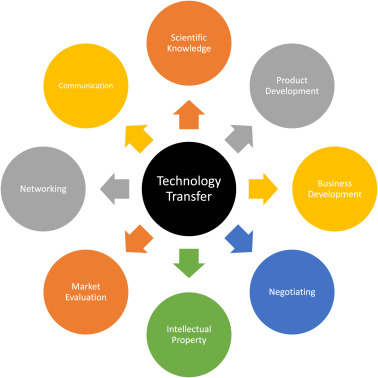Introduction:
At the dynamic intersection of academia and industry, collaborative research serves as a cornerstone of innovation. Central to fostering these collaborations are Technology Transfer Offices (TTOs), entities that play a pivotal role in translating research outcomes into real-world applications. This article delves into the multifaceted functions of TTOs, underscoring their indispensable role in driving collaborative research initiatives.
Understanding Technology Transfer:
Before exploring the specifics, it is essential to grasp the concept of technology transfer. This process involves the movement of research-generated knowledge and technologies from one organization, typically an academic institution, to another, often an industry partner. TTOs act as catalysts in this intricate process.
The Core Functions of Technology Transfer Offices:
TTOs serve as the linchpin between academia and industry, bridging the gap between research and commercialization. Their primary functions include managing intellectual property, licensing technologies, and fostering collaborations that propel research outcomes into the marketplace.
Navigating Collaborative Research Initiatives:
Identifying collaborative opportunities is a nuanced process. TTOs actively engage in scouting potential partners, understanding their research needs, and aligning them with academic expertise. By acting as matchmakers, TTOs significantly contribute to the success of collaborative projects.
Intellectual Property Management:
Safeguarding intellectual property is a critical aspect of collaborative research. TTOs work diligently to ensure that the rights and ownership of innovations are protected, creating a secure environment for researchers and industry partners to collaborate effectively.
Funding and Grants:
Collaborative research often requires substantial financial support. TTOs play a crucial role in securing funding by actively participating in grant applications, managing grants, and identifying funding opportunities that align with the goals of collaborative projects.
Technology Valuation and Assessment:
Determining the potential of research outcomes is a complex task. TTOs employ rigorous technology valuation and assessment processes to evaluate the feasibility and market potential of innovations, guiding researchers and industry partners toward impactful collaborations.
Commercialization Strategies:
Successful commercialization is the ultimate goal of collaborative research. TTOs develop and implement strategies that balance economic objectives with the principles of academic research, ensuring that innovations make a meaningful impact in the marketplace.
Overcoming Challenges in Collaborative Research:
Collaborative projects are not without challenges. TTOs actively address obstacles, acting as facilitators and problem solvers to ensure that collaborative research ventures progress smoothly and achieve their intended outcomes.
Case Studies of Successful Collaborations:
Real-world examples of successful collaborations underscore the impact TTOs have on driving innovation. Examining these case studies provides valuable insights into the dynamics of effective collaboration and the instrumental role of TTOs in these successes.
The Impact on Innovation Ecosystems:
Beyond individual projects, TTOs contribute to the broader innovation ecosystem. Their efforts stimulate regional and national innovation by creating a fertile ground for collaboration, fostering economic growth, and positioning their institutions as key players in the innovation landscape.
Ethical Considerations in Collaborative Research:
Ensuring ethical standards in research practices is paramount. TTOs uphold these standards, emphasizing the importance of ethical considerations in collaborative projects to maintain the integrity of the research process.
TTOs and the Evolving Technological Landscape:
As technology evolves, so do the responsibilities of TTOs. Adapting to technological advancements is crucial for TTOs to remain effective in their role, shaping the future of collaborative research in an ever-changing landscape.
Collaboration Beyond Borders:
In an interconnected world, TTOs also facilitate international collaborations. By expanding the reach of collaborative research initiatives globally, TTOs contribute to a diverse and expansive research environment.
Conclusion:
In conclusion, the indispensable role of Technology Transfer Offices in collaborative research cannot be overstated. From bridging academia and industry to managing intellectual property and fostering innovation ecosystems, TTOs are the unsung heroes driving the transformative power of collaborative research. As we continue to unlock collaborative potential, the role of TTOs remains central to the advancement of knowledge and the translation of ideas into impactful solutions.
